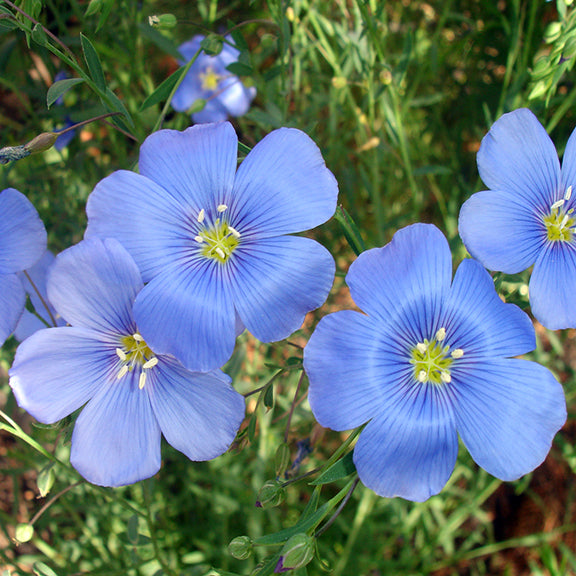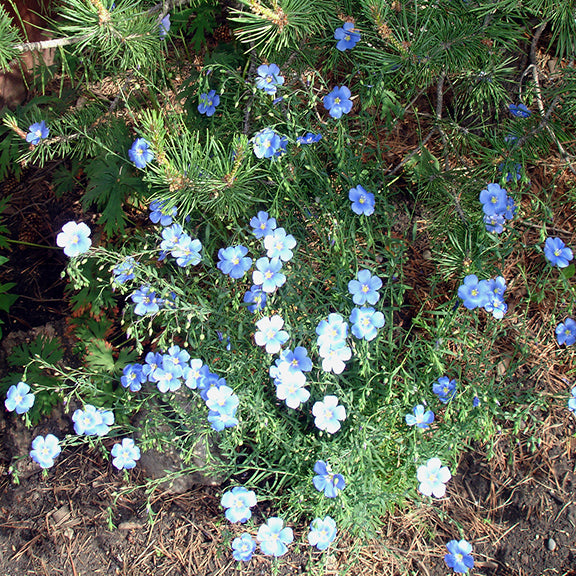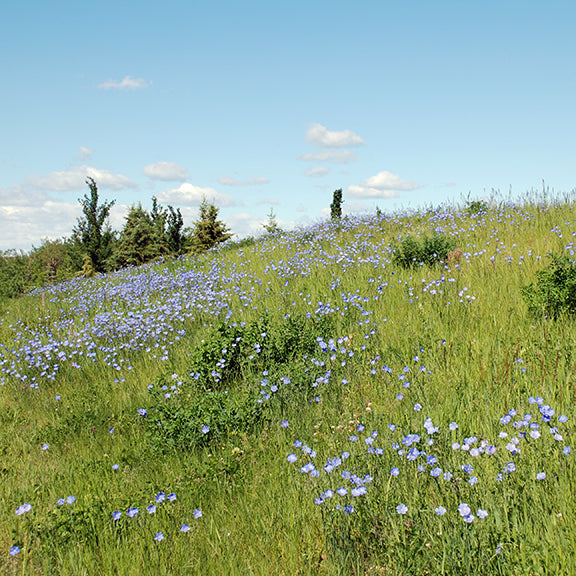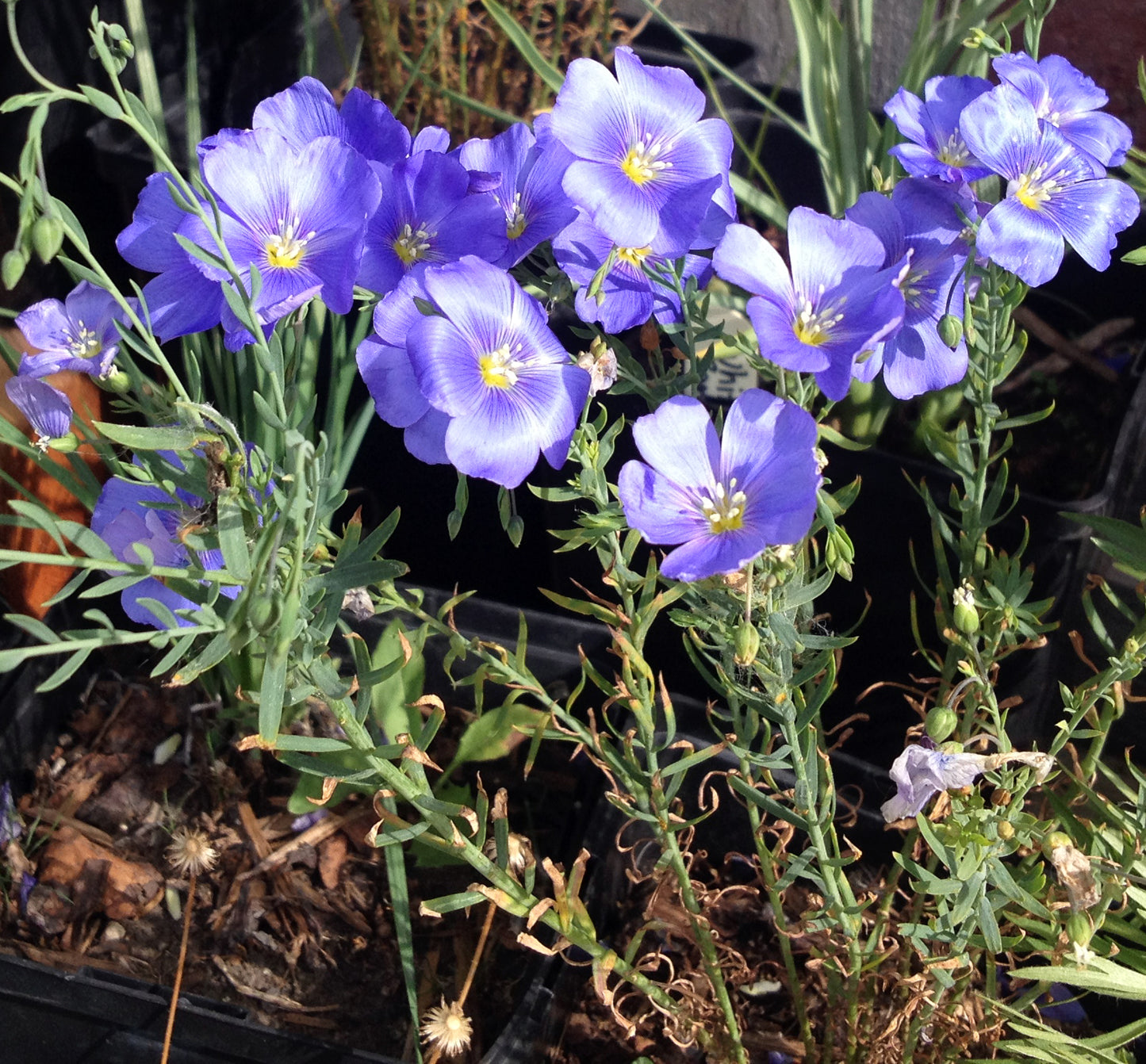Wild About Flowers
Linum lewisii - Blue Flax
Linum lewisii - Blue Flax
Couldn't load pickup availability
Blue Flax is a graceful, drought-tolerant perennial with sky-blue, cup-shaped flowers that bloom throughout summer. Each delicate blossom lasts only one day, but new blooms continuously emerge, creating a long-lasting floral display. Its slender, wiry stems and fine, needle-like leaves give it a delicate yet resilient appearance, making it a standout in prairie plantings, dry meadows, and pollinator gardens. The nectar-rich flowers attract native bees, butterflies, and hoverflies, while sparrows and finches feed on mature flax seeds in late summer and fall.
Blue Flax is well suited for flower gardens, naturalized landscapes, roadside plantings, and xeriscaping. Its deep, fibrous root system stabilizes soil and prevents erosion, making it valuable for prairie restoration and soil conservation. While not highly palatable, its fine-textured foliage generally deters heavy browsing, and any occasional deer damage is minimal.
Bloom Times & Plant Sizes
Bloom Times & Plant Sizes
Important Information - The "Bloom Period" is an indicator of the time period within which the wildflowers will bloom and does not describe the time period that a single plant will bloom. The "Sizes" listed are intended to be a general guideline to consult during plant selection. - Plant growth and bloom times will vary depending on geographical location & individual site conditions.
Edible & Medicinal Info Disclaimer
Edible & Medicinal Info Disclaimer
The Edible & Medicinal information on this site is for informational purposes only and should not be acted on without thorough research and professional guidance. We are not responsible for any adverse effects resulting from the use of or misidentification of plants.
Share




Plant Specifics
Seeds Per Pack
Seeds Per Package: 20
Light Conditions
- Sun
- Part Shade
Soil Conditions
- Well Drained
- Loam
- Sandy
- Gravelly
- Dry
Height
- 12" - 24"
- 24" - 36"
Width
- 12" - 24"
- 24" - 36"
Bloom Colour
- Blue
Month of Bloom
- May
- June
- July
- August
Vigorousness
- Fast
Deer Resistance
- Moderate
Features
- Birds
- Butterflies
- Bees
- Long Bloom Time
- Attractive Seed Heads
- Urban Spaces
- Rural Spaces
- Medicinal Properties
- Edible Parts
Chinook Exposure
- Fully Exposed
Distribution Info
Linum lewisii is native from BC, to ON in Canada and widespread across the western and central US. It thrives in prairies, foothills, open woodlands, and roadsides, preferring full sun.
Traditional Edible & Medicinal Info
Linum lewisii seeds are edible but should be consumed in small amounts due to natural cyanogenic compounds. Traditionally, they were ground into flour or used as an oil source. Medicinally, crushed seeds or leaves were applied as poultices for cuts, burns, and skin irritations, while seed infusions were used to soothe stomach discomfort. The plant is not considered toxic in small amounts, but large quantities of raw seeds may be harmful.




